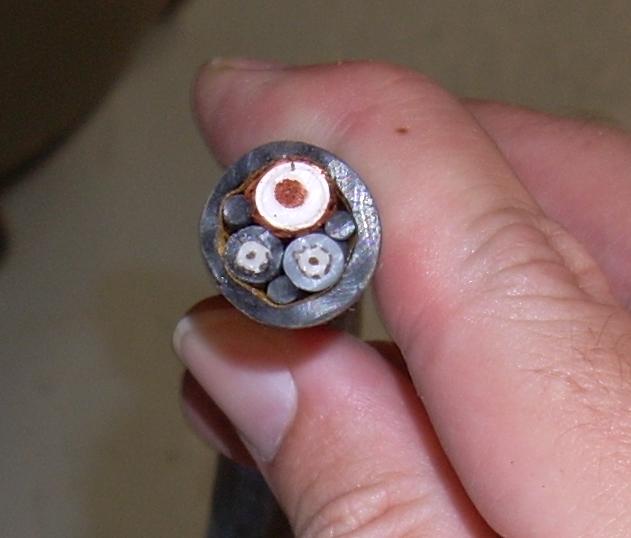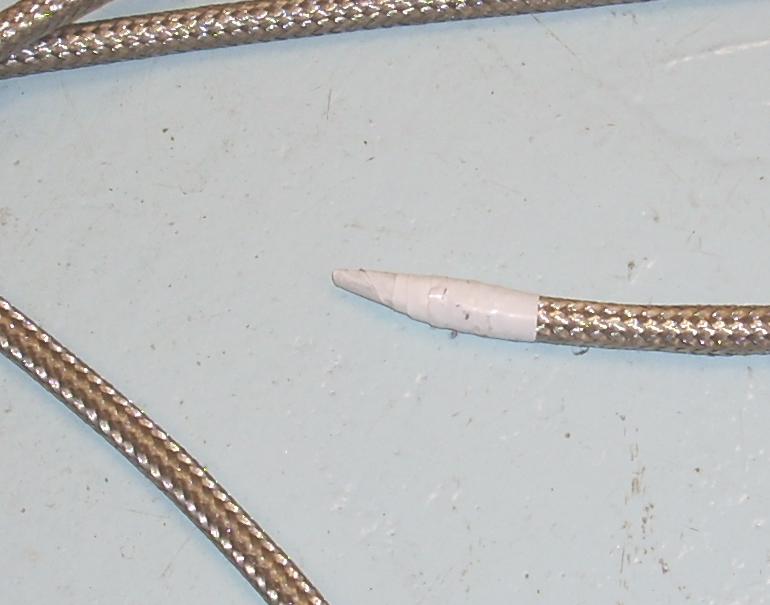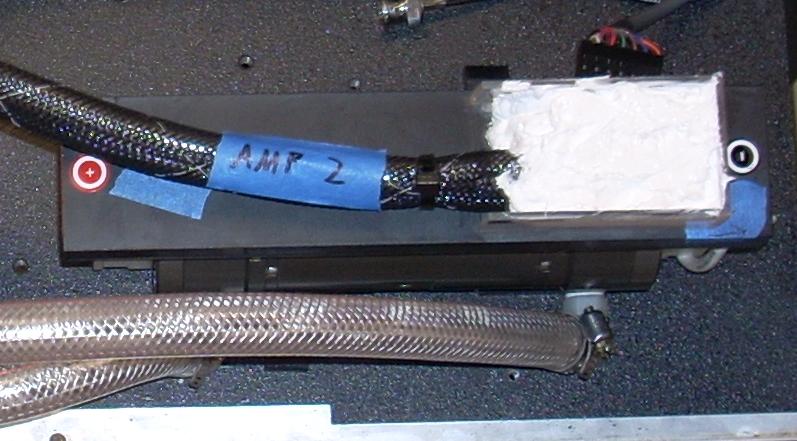
Some dealer cut the cable assembly on one of my capacitor banks. A power supply together with its laser is worth significantly more than the two sold separately... They are not generally interchangeable. And an exotic custom cable assembly is worth a whole lot more when its not destroyed...

Anyway, I need a new one.
The cable contains: a power coax, with a center conductor of about 10 gauge, two lengths of normal RG58 coax, and some plastic to keep it from flopping around. The RG58 carries 24 volt interlock, and goes to two pins on the lamp assembly which are simply tied together to detect if the cable is plugged in.
I ordered 20 feet of 10 gauge 15kv cable, and 40 feet of 1/4 to 3/8 tinned copper braid from McMaster-Carr. The 10 gauge conductor weighs about 1.5 grams per inch, while the braid is 1.3 grams per inch. I doubled up the braid, for a total of 2.6 grams/inch. That may have been overkill, but I like my ground...
I then laid everything out in a straight line on the floor. Watch out that neither the wire nor the braid are twisted. If you unroll the roll, instead of just pulling loops off the side of the roll, it won't get twisted.
I then stuffed the wire into the braid, and stuffed that assembly into the rest of the braid. I was about 3 feet short on the second layer of braid, the braid shortens when it expands (duh...).

The end of the cable will want to catch on the inside of the braid, cut it as square as you can, or put some tape over it, to avoid that problem. For the second layer of braid, I twisted everything together, and put a bit of electrical tape on the tip.

For the outer insulation, I stuffed the wire and braid through some 3/8" inner diameter 1/2" outer diameter vinyl tubing. Its a bit baggy, but I don't think I could have gotten it into a tighter tube.

To do that, I taped the ends of the vinyl tubing to a cart and my tool box, so it was stretched straight and taut (curves will increase friction). I then sucked some kite string through the tube, and tied it to the end of the wire. I first tried putting electrical tape on the end to keep everything from unraveling, but the electrical tape kept getting stuck on the inside of the tube. The two plastics just sort-of adhered. Replacing the electrical tape with masking tape avoided the problem. I then pulled the wire through with the string, and put cable ties on the ends to keep it from escaping.
Last but not least, before you cut off any extra length of tube, un-tape it from whatever you taped it between. Let the nylon tubing relax back to its normal length before cutting it.
To hold the complete assembly of power coax and RG-58 together, I got some plastic braid.
To duplicate the Quantel connector, I got some 5/8 inch diameter brass threaded rod, and some #8 brass threaded rod. I drilled holes down the center of the threaded rod, to form the connector, and then screwed the threaded rod into a tapped hole in a piece of 1/4 inch Plexiglas.
My holes in the brass rod were not quite on the center line, which actually added some adjustability to take all the various sources of imprecision into account. To line everything up, I put all four pieces of brass threaded rod onto the pins on the lamp assembly, and then rotated/swapped them around, comparing their positions to the holes in the piece of Plexiglas to get the best fit. I then drew arrows on the ends to indicate the correct orientation, and threaded them into the Plexiglas.
A jamb nut held the threaded rod in the Plexiglas, and then a second nut held the end of the wire against that first jamb nut.
In the side shot, the two pieces of RG58 are closest to the camera. Note that their shields aren't connected to anything. It is grounded on the other end, but doesn't complete any circuit. So current can not be induced in it, and in turn induce a current in the center conductor.
The first time I pushed The Button, the connector arced. All that really cool 4500 volt/layer yellow high voltage tape didn't help. Potting the connector in RTV (like Quantel's manufactured ones) is important. I unfortunately used the wrong RTV (google first...). The acetic acid kind will corrode brass and copper. As a data point, the RTV I used, GE's RTV102 will hold off 20 kV/mm.

Raw imagery: 20090726,20090802,20090808